| View previous topic :: View next topic |
| Author |
Message |
Jon - CLou
Joined: 02 Nov 2003
Posts: 316
City/Region: Port Angeles
State or Province: WA
C-Dory Year: 1986
C-Dory Model: 22 Angler
Vessel Name: C-Lou
Photos: C-Lou and Pee Wee
|
 Posted: Sun Feb 22, 2004 9:26 pm Post subject: Posted: Sun Feb 22, 2004 9:26 pm Post subject: |
 |
|
| Thanks Ken. |
|
| Back to top |
|
 |
Mr. Fisherman
Joined: 02 Nov 2003
Posts: 726
State or Province: OR
C-Dory Year: 1995
C-Dory Model: 22 Angler
Vessel Name: Sea Lion
Photos: Sea Lion
|
 Posted: Mon Feb 23, 2004 3:29 am Post subject: Kewl Posted: Mon Feb 23, 2004 3:29 am Post subject: Kewl |
 |
|
Very good idea.
Maybe you can start with my boat. I have all but given up hope of puting in a forward facing seat conversion. Maybe with your help we can keep my boat from sinking in the driveway again 
_________________
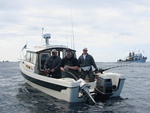
Live to Fish
Fish to Live |
|
| Back to top |
|
 |
Minnow
Joined: 03 Dec 2003
Posts: 190
City/Region: East Amwell
State or Province: NJ
C-Dory Year: 2004
C-Dory Model: 25 Cruiser
Vessel Name: Minnow
Photos: Minnow
|
 Posted: Wed Feb 25, 2004 5:47 pm Post subject: Posted: Wed Feb 25, 2004 5:47 pm Post subject: |
 |
|
| As an electrical contractor for the last 25 years, I thought I would throw in my $.02. Digital multi-meters certainly have their place in advanced troubleshooting, but 99% of the time, all you really need is go/ no-go testing. For daily 120/240 Volt work, a solenoid tester (Wiggy) fits the bill because you don't need to know if it's 115 or 118, just that it's hot or not. The same thing for 12 volt systems. A 12 volt auto lamp with leads and alligator clips soldered to it puts enough of a load on the circuit in question to give you a more meaningful, easier interpretation than that of a DMM. As an added bonus, my aging eyes can see the brightness of the bulb without studying the meter closely. Give it a try and you'll be suprised at how useful and simple it can be. |
|
| Back to top |
|
 |
Pat Anderson
Joined: 02 Nov 2003
Posts: 8553
City/Region: Birch Bay, WA
State or Province: WA
C-Dory Year: 2005
C-Dory Model: 25 Cruiser
Vessel Name: Daydream
Photos: Daydream and Crabby Lou
|
 Posted: Sat Feb 28, 2004 9:55 am Post subject: Posted: Sat Feb 28, 2004 9:55 am Post subject: |
 |
|
Well, your "Completed wiring" photo is awesome - Daydream has a plate of spaghetti back there, which I made worse when I connected in the GPS and radio...you coming to Jarrell Cove, and will you be there for oh, say, about a hundred hours? 
| stevej wrote: | Don't know about the newer CD's but on Shearwater the factory wiring was marginal at best. Confusing to work on, difficult to expand and done with low quality componets. Believe I spent about $500 dollars for parts and almost 100 hours labor (I'm slow but do good work) on the rework of the system.
Looking forward to class
stevej |
_________________
DAYDREAM - CD25 Cruiser
CRABBY LOU - CD16 Angler (sold 2020)
Pat & Patty Anderson, C-Brat #62!
http://daydreamsloop.blogspot.com
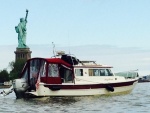
|
|
| Back to top |
|
 |
Pat Anderson
Joined: 02 Nov 2003
Posts: 8553
City/Region: Birch Bay, WA
State or Province: WA
C-Dory Year: 2005
C-Dory Model: 25 Cruiser
Vessel Name: Daydream
Photos: Daydream and Crabby Lou
|
 Posted: Sat Feb 28, 2004 10:00 am Post subject: Re: Kewl Posted: Sat Feb 28, 2004 10:00 am Post subject: Re: Kewl |
 |
|
Were then possibly considering an automatic electric forward facing seat conversion? Helm seat switch or something? :angel
| Mr. Fisherman wrote: | Very good idea.
Maybe you can start with my boat. I have all but given up hope of puting in a forward facing seat conversion. Maybe with your help we can keep my boat from sinking in the driveway again  |
|
|
| Back to top |
|
 |
Pat Anderson
Joined: 02 Nov 2003
Posts: 8553
City/Region: Birch Bay, WA
State or Province: WA
C-Dory Year: 2005
C-Dory Model: 25 Cruiser
Vessel Name: Daydream
Photos: Daydream and Crabby Lou
|
 Posted: Sat Feb 28, 2004 10:07 am Post subject: Posted: Sat Feb 28, 2004 10:07 am Post subject: |
 |
|
Oh, my, here we go. You say "sender," "sensor," "tone ring" - I hear "blah, blah, blah" - I don't know where these puppies are, what they look like, but my tachs work more or less as far as I know, and I am pretty well convinced I shouldn't be screwing with them if I want them to CONTINUE to work, same unfortunately with every electrical/mechanical/physical thing on the whole boat... Will I know about these framises and widgets after the course? I am ready for Lesson 2!
| B~C wrote: | Check the Ohm value of the sender (whenever a person checks the ohms in a component it must be removed from the circuit and the power off) most speed sensors have a ohm reading of between 500 to 4,000 ohms
Check the adjustment of the sensor, it should be almost touching the tone ring.
Check the output of the sensor, disconnect the sensor and connect your DMM in the ACV mode to the sensor wires, you should see the AC voltage increase with speed. you could also remove the sensor & with meter attached, pass an iron object in front of the pickup, voltage should vary with regards to how fast (and close) you wiz by with the chunk of metal
tune in next week, hope to crank out some material on volts, amps, ohms, watts and my favorite, voltage drops. Voltage drops are the best method of finding bad connections and intemitten problems |
|
|
| Back to top |
|
 |
B~C
Joined: 31 Oct 2003
Posts: 2861
City/Region: Bend
State or Province: OR
C-Dory Year: 1999
C-Dory Model: 22 Cruiser
Vessel Name: Blue~C
Photos: Blue~C
|
 Posted: Sat Feb 28, 2004 10:41 am Post subject: Posted: Sat Feb 28, 2004 10:41 am Post subject: |
 |
|
I haven't forgotten about this project, it will take a bit of time to get it all worded up....ok, it's a motivation issue, it causes me great pain and anguish to word up a post more than a few sentences long.
I rifled through my file cabinet and collected some good handouts for J? Cove
_________________
Ken
1999 22' boaterhome |
|
| Back to top |
|
 |
TyBoo
Joined: 23 Oct 2003
Posts: 5313
City/Region: Warrenton
State or Province: OR
C-Dory Year: 1996
C-Dory Model: 25 Cruise Ship
Vessel Name: TyBoo
Photos: TyBoo
|
 Posted: Mon Mar 08, 2004 1:27 am Post subject: Posted: Mon Mar 08, 2004 1:27 am Post subject: |
 |
|
The class hasn't even started, and we have a test already. What's wrong with this picture?
Looking at my pictorial schematic, the problem is pretty easy to spot. But wire up the three volt meters this way, and it works great while the switches are closed, but you got problems when everything is shut off.

_________________
TyBoo Mike
Sold: 1996 25' Cruise Ship
Sold: 1987 22' Cruiser |
|
| Back to top |
|
 |
Mr. Fisherman
Joined: 02 Nov 2003
Posts: 726
State or Province: OR
C-Dory Year: 1995
C-Dory Model: 22 Angler
Vessel Name: Sea Lion
Photos: Sea Lion
|
 Posted: Mon Mar 08, 2004 2:02 am Post subject: I'm Short Posted: Mon Mar 08, 2004 2:02 am Post subject: I'm Short |
 |
|
Afraid I'm short on answers...
 |
|
| Back to top |
|
 |
AK Angler
Joined: 18 Nov 2003
Posts: 327
City/Region: South Central
State or Province: AK
C-Dory Year: 2007
C-Dory Model: 26 Venture
Vessel Name: Rod Holder
Photos: Rod Holder
|
 Posted: Mon Mar 08, 2004 3:27 am Post subject: Posted: Mon Mar 08, 2004 3:27 am Post subject: |
 |
|
OK...
Wouldn't the "juice" backfeed from BATT3 and BATT2 through VM3 and VM2, then through VM1 and the relay and go straight to ground??
 How 'bout removing the switch to VM1 and reconnecting it like the other VM's. Then add a switch between VM1 and the relay. How 'bout removing the switch to VM1 and reconnecting it like the other VM's. Then add a switch between VM1 and the relay.
Would that fix it?
_________________
-Rod
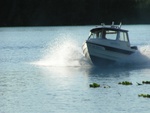
89CD16A- The Navicula has been sold... |
|
| Back to top |
|
 |
Sea Wolf
Joined: 01 Nov 2003
Posts: 8650
City/Region: Redding
State or Province: CA
C-Dory Year: 1987
C-Dory Model: 22 Cruiser
Vessel Name: Sea Wolf
Photos: Sea Wolf
|
 Posted: Mon Mar 08, 2004 8:41 am Post subject: Posted: Mon Mar 08, 2004 8:41 am Post subject: |
 |
|
Current guessing game, pt. 1:
Looks like the switch at VM1 is on the wrong side, leaving VM1 wired in series with the circuits sub parts for VM2 and VM3, rather than parallel, as desired.
The switch should be between the common side after passing through the meters and the NO (Normally Open) relay's coil. Closing the switch activates the magnetic coil, closes the relay, and allows all three meters to connect through the relay to ground, allowing them to register the voltage in their respective batteries.
The way it's hooked up now, battieries 2 and 3 feed current through their meters and then VM1 and to ground through the relay's coil when the switch at VM1 is open. This is probably not enough curent to close the relay because of the combined resistance, but wastes current and doesn't register meanngful info on the meters. Joe.
_________________
Sea Wolf, C-Brat #31
Lake Shasta, California
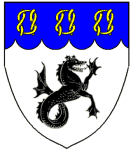  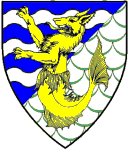
"Most of my money I spent on boats and women. The rest I squandered'. " -Annonymous |
|
| Back to top |
|
 |
TyBoo
Joined: 23 Oct 2003
Posts: 5313
City/Region: Warrenton
State or Province: OR
C-Dory Year: 1996
C-Dory Model: 25 Cruise Ship
Vessel Name: TyBoo
Photos: TyBoo
|
 Posted: Mon Mar 08, 2004 10:54 am Post subject: Posted: Mon Mar 08, 2004 10:54 am Post subject: |
 |
|
You guys really know this stuff! The switch pictured below VM1 is the cabin disconnect, and has to be where it is. There is a whole bunch of other circuits running all over the place that are not illustrated. When the switch is open, just like you said, the current from the other two batteries feeds back to ground via VM1 and the solenoid coil. VM1 will then have -5 volts or so across the terminals. It's easy to see on paper, but it didn't occur to me while wiring it up. I guess maybe the pictures should be drawn first, huh?
To fix it, I ran the negative side of VM1 straight to ground, since its circuit is broken when the switch is opened. The negative connection for VM2 and VM3 is now routed thru a DPDT relay, so both circuits are independent and broken when the coil drops out. All is good now, except the $26 meter for VM1 that has to be thumped to get an accurate reading. I guess the little needle didn't like going backward.
By the way, the positive legs of the volt meters are fused (1 amp) at their origin.
All I wanted was to see all three volages when the cabin disconnect switch was closed, and have the things go off with the switch. Sheesh - where's B~C when you need him? |
|
| Back to top |
|
 |
CatyMae n Steve
Joined: 18 Jun 2005
Posts: 838
City/Region: Jefferson, OR
State or Province: OR
C-Dory Year: 2006
C-Dory Model: 22 Cruiser
Vessel Name: CatyMae
Photos: CatyMae
|
 Posted: Mon May 14, 2007 9:41 pm Post subject: Re: I'm Short Posted: Mon May 14, 2007 9:41 pm Post subject: Re: I'm Short |
 |
|
| Mr. Fisherman wrote: | Afraid I'm short on answers...
 |
I'm short AND have no answers....only questions
What do we need to install shore power on the sweet lil 22 cruiser? |
|
| Back to top |
|
 |
thataway
Joined: 02 Nov 2003
Posts: 20810
City/Region: Pensacola
State or Province: FL
C-Dory Year: 2007
C-Dory Model: 25 Cruiser
Vessel Name: thataway
Photos: Thataway
|
 Posted: Mon May 14, 2007 9:53 pm Post subject: Posted: Mon May 14, 2007 9:53 pm Post subject: |
 |
|
What do you want the shore power to do? If it is just a battery charger, it will be very simple. If you want a built in battery charger, several outlets (GFRI) and a water heater, plus microwave, it gets a little more complex, but all basically the same.
_________________
Bob Austin
Thataway
Thataway (Ex Seaweed) 2007 25 C Dory May 2018 to Oct. 2021
Thisaway 2006 22' CDory November 2011 to May 2018
Caracal 18 140 Suzuki 2007 to present
Thataway TomCat 255 150 Suzukis June 2006 thru August 2011
C Pelican; 1992, 22 Cruiser, 2002 thru 2006
Frequent Sea; 2003 C D 25, 2007 thru 2009
KA6PKB
Home port: Pensacola FL |
|
| Back to top |
|
 |
Sea Wolf
Joined: 01 Nov 2003
Posts: 8650
City/Region: Redding
State or Province: CA
C-Dory Year: 1987
C-Dory Model: 22 Cruiser
Vessel Name: Sea Wolf
Photos: Sea Wolf
|
 Posted: Mon May 14, 2007 10:00 pm Post subject: Posted: Mon May 14, 2007 10:00 pm Post subject: |
 |
|
Caty Mae and Steve-
Here's Don Casey's answer, a very good one for basics: (Hope it's not overwhelming to some!)
(I'm going to quote it all here so it goes into the Library Archives for reference)
Anyone working on Shore Power should understand the following:
If you choose to rig a simpler system, you'll do so knowing the risks and better able to do so safely.
Joe.
Safe Shorepower
by Don Casey
However you bring shorepower aboard your boat, if you do it without the appropriate safeguards, you place yourself, your crew, and your guests at a terrible--and foolish--risk.
Three-Conductor System
AC circuits use three wires, and it is essential to your safety to understand the function of each. Because the direction of current flow in an AC circuit is reversing 120 times per second (60 positive-to-negative-and-back-to-positive cycles), it is counterintuitive to refer to one side of an AC circuit as positive and the other as negative. Instead, we call one side hot, the other side neutral. By code the hot wire in an AC circuit is black, red, or blue; the neutral wire is always white. Since the neutral side is connected to ground, it is the hot side of the circuit that is the most dangerous. However, you should always treat both sides with equal respect because a wire reversal to the outlet will make the neutral side hot.
The third wire is called the grounding wire and it connects all metal component, junction, and appliance housings to ground. Since neutral also runs to ground, you might wonder why we need a second grounding wire. It is there to keep you alive. If, for example, a wire inside an appliance comes in contact with the case, the case becomes "hot." No fuse blows because there is no circuit and thus no current flow--not until you touch the case. Then your body completes the path to ground and you get a nasty shock.
The grounding wire changes all that. A short to the case instantly becomes a short to ground, probably opening the breaker in the circuit. Even if the short is insufficient to kick the breaker, or if it occurs while you are holding the appliance, the grounding wire still protects you by providing a lower-resistance path to ground than your body offers. Anything that degrades or opens the grounding circuit, such as a broken connection, a corroded or missing ground prong, or an improperly wired outlet leaves you dangerously vulnerable. Ashore the grounding wire is often bare, but in boat wiring it should be insulated and green. We will come back to this all-important green wire.
Inlet Fitting and Dock Cord
A safe shorepower system begins with a weather-tight inlet fitting. If the shorepower inlet on your boat isn't weather-proof--with and without the cord attached--you need a different fitting. The 30-amp locking receptacle has become the norm at most U.S. and Caribbean marinas, so equipping your boat with a 30-amp inlet minimizes compatibility problems.
Make sure the fitting is in a location that does not put it at risk for submersion or mechanical damage, and that the backside is well ventilated. The wire distance from the inlet to the main AC circuit breaker should never exceed 10 feet.
An extension cord from a builder's supply, even one labeled "Heavy Duty," is not an appropriate shorepower cord. To shrug off the exposure, submersion, abrasion, and strain of marine use, the cable should carry a hard-service rating--SO, ST, or STO. There must be no possibility of the cable pulling free of the plugs (dock cords sometimes become dock lines) or of the plugs pulling out of the receptacles. For 30-amp service, the conductors must be #10 AWG or larger.
Circuit Breakers
Factory shorepower in older boats too often omitted a circuit breaker. The thinking was that a boat was just another "appliance" plugged into the marina circuit, which was already-protected. But faulty marina wiring is too common to entrust your safety to an unknown breaker behind a dock office a quarter of a mile away. A safe AC system requires an onboard dual-pole breaker.
The breaker's rating must not exceed the service; i.e., a 30-amp inlet limits the main breaker to 30-amp. However, if the circuit directly supplies outlets in the cabin, the size of the breaker is limited to the outlet ratings--either 15 or 20 amps.
A single-circuit offers the benefit of simplicity, but if you need multiple AC circuits, breaker panels are available with a main breaker and two or more branch breakers. Despite being commonplace, it is not a good practice to combine AC and DC in the same breaker panel.
Polarity
Reversed polarity leaves your AC circuits unprotected if you have a single-pole main breaker since the breaker is now on the neutral side. Even with double-pole breakers, reversed polarity puts ON-OFF switches on the wrong side of the circuit, leaving OFF appliances fully energized. Be sure your AC panel is equipped with a polarity tester.
Where branch breakers are single pole, be sure they are on the "hot" side of the circuit.
Wire
Resist any temptation to use house wire (Romex) for the AC circuits on your boat. Common house wire is solid copper, fine for a quiescent life inside a wall but unsuitable for the marine environment. Boat wiring requires the flexibility of stranded wire, and it should be tinned for corrosion resistance.
Wire size for AC circuits is generally less a factor of voltage drop than of amperage capacity, but starting currents, particularly for compressors, can momentarily increase the current draw up to 5 times nominal. If the wire is too small, this momentary surge can actually cause supply voltage to drop below the level required to start the compressor. As a practical matter, 15 and 20 amp circuits should be wired with 12-gauge wire. The (unprotected) wire between the inlet fitting and the main breaker should be 10-gauge for a 30-amp inlet and 6-gauge if the service is 50-amp.
Grounding
The green "grounding" wire in AC circuits provides a low resistance path to ground should any of the various metal cases enclosing your AC system become energized. But what if the leak is into the DC wiring, caused, for example, by crossed wires or a short in a battery charger, inverter, or other dual-voltage appliance? AC leaking into the DC system will seek ground, meaning it will automatically travel through the wiring to the ground connection on the engine and down the prop shaft to the water. This is essentially the same as dropping a hot wire into the water. In fresh water, this poses a real risk of electrocution for anyone in the water nearby. Electrocution is less likely in saltwater, but the current field can be enough to paralyze muscles and cause a swimmer to drown.
Connecting the green wire to the ground terminal on the engine offers AC leakage into the DC system a lower-resistance path to ground--through the grounding wire. This eliminates the risk to swimmers as long as the grounding wire connection to ground is sound. However, if corrosion on the ground prong of your dock cord or some other fault breaks the ground connection, all ground-fault current, not just AC to DC leakage, will flow into the water. It is essential to test the ground connection at the dock and to maintain cords and plugs in good condition.
In your breaker box at home the neutral wires and grounding wires all connect to the same terminal strip (or bus bar), but on a boat the AC grounding wire is connected to the DC ground. Also connecting the neutral wire to it makes underwater hardware a current-carrying path to ground, potentially lethal for anyone in the water nearby. On a boat the neutral (white) conductor and the grounding (green) conductor MUST NEVER BE DIRECTLY CONNECTED.
Outlets
Outlets are all polarized, and the Lone Ranger's white horse, Silver, can provide the association necessary to remember which wire connects to which terminal. White goes to silver. So the black wire connects to the opposite terminal, usually brass, but sometimes dark. The green terminal is for the green grounding wire.
Electricians ashore simply tighten terminal screws onto a loop of wire or insert the stripped end into a spring clamp. Neither method is appropriate on a boat. Use a proper crimp terminal or install commercial-grade outlets with screw-tightened clamps in place of the more typical screw terminals. These may be used with stranded wire.
Ground Fault Interrupt
Regular circuit breakers are essentially fire-protection devices and offer no protection against electrical shock. A ground-fault circuit interrupter (GFCI), on the other hand, provides a high degree of shock protection. If you accidentally touch an energized wire or component and you are grounded, the GFCI disconnects the circuit in about 1/40 of a second, too little time for the current to build to a dangerous level.
In recognition of the increased risk of shock in damp environments, many municipal building codes mandate GFCIs in bathrooms and, increasingly, kitchens. Boats are damp environments, and every outlet on a boat should be protected by a GFCI.
GFCIs are inexpensive and easy to install. Simply replace the first outlet on a circuit (counting from the breaker) with a GFCI fixture, and all the outlets on that circuit will be protected. Make sure the terminals marked LINE are connected to the wires leading back to the breaker and those marked LOAD feed the remainder of the circuit. After you install a GFCI fixture, always test it.
Safety
The safest course is to leave AC system repairs to a qualified marine electrician, but if you opt to do the work yourself, never, ever work on an AC circuit hot. Disconnect the cord--and take it off the dock, lest some Good Samaritan send you to the next life. Also disconnect the inverter. Then religiously check all wires with a voltage tester. This is the electrician's version of "measure twice, cut once." Be absolutely certain that there is no voltage between any two wires or any wire and ground.
When it comes to AC power, what you don't know definitely can hurt you.
AC aboard raises a number of additional considerations not covered here. Sailors and powerboaters alike will find a more complete treatment in Sailboat Electrics Simplified by Don Casey. |
|
| Back to top |
|
 |
|
|
You cannot post new topics in this forum
You cannot reply to topics in this forum
You cannot edit your posts in this forum
You cannot delete your posts in this forum
You cannot vote in polls in this forum
You cannot attach files in this forum
You cannot download files in this forum
|
|

 Search
Search Private Messages
Private Messages Profile
Profile Log in
Log in Register
Register Help
Help





 How 'bout removing the switch to VM1 and reconnecting it like the other VM's. Then add a switch between VM1 and the relay.
How 'bout removing the switch to VM1 and reconnecting it like the other VM's. Then add a switch between VM1 and the relay.



